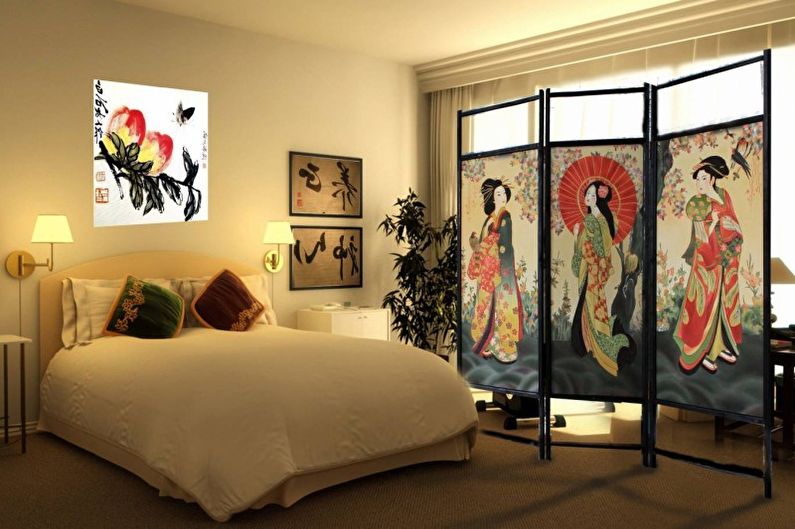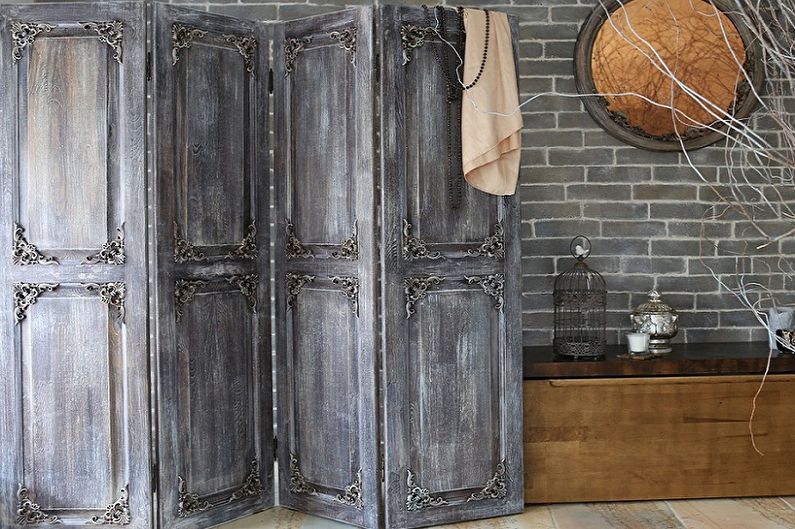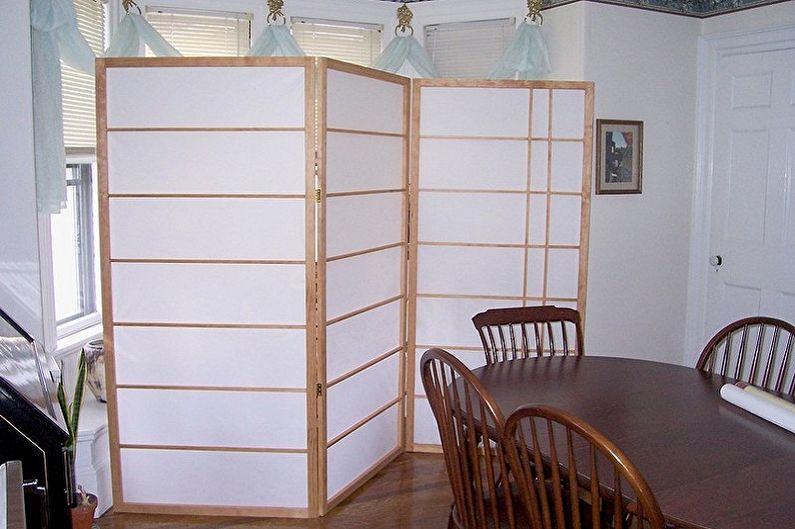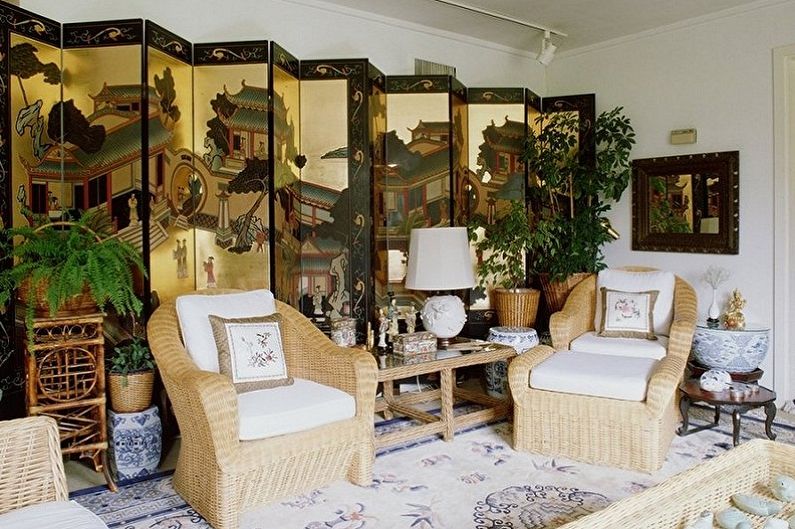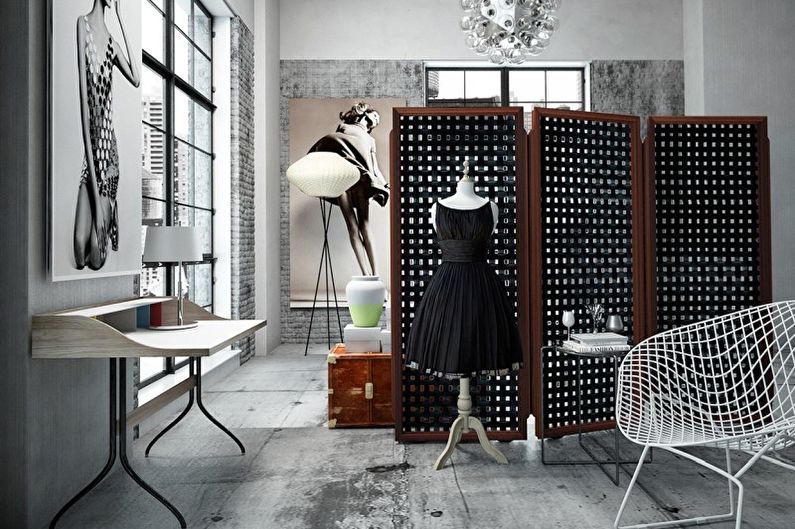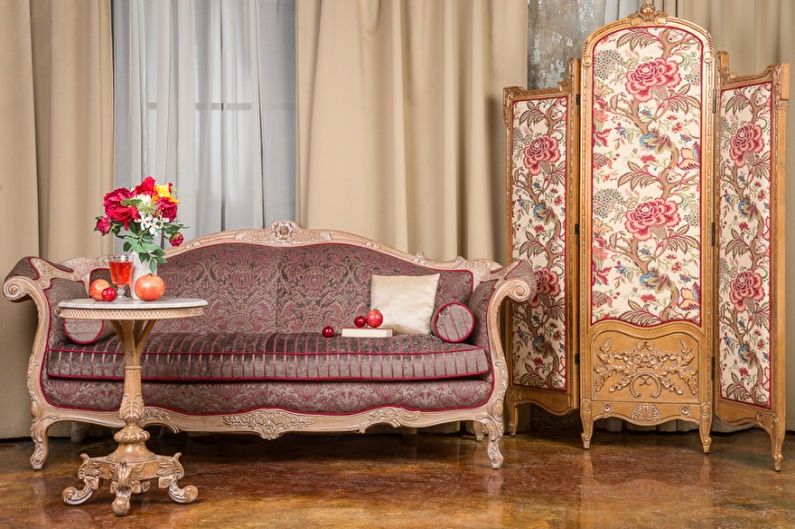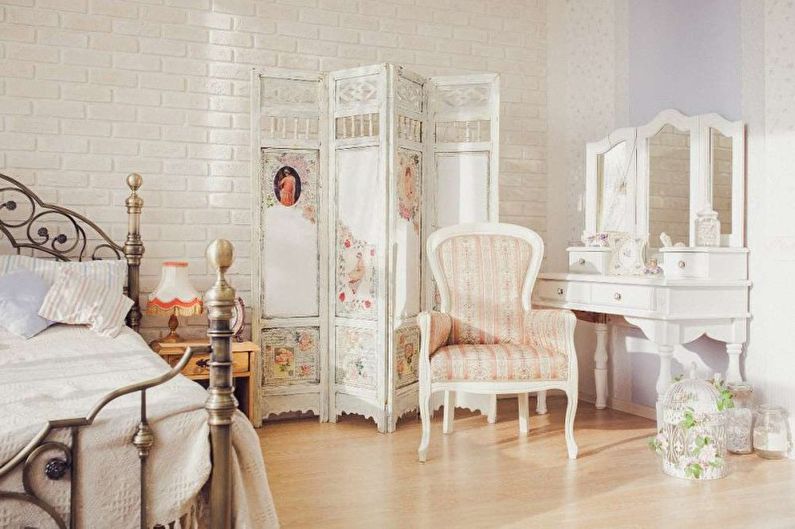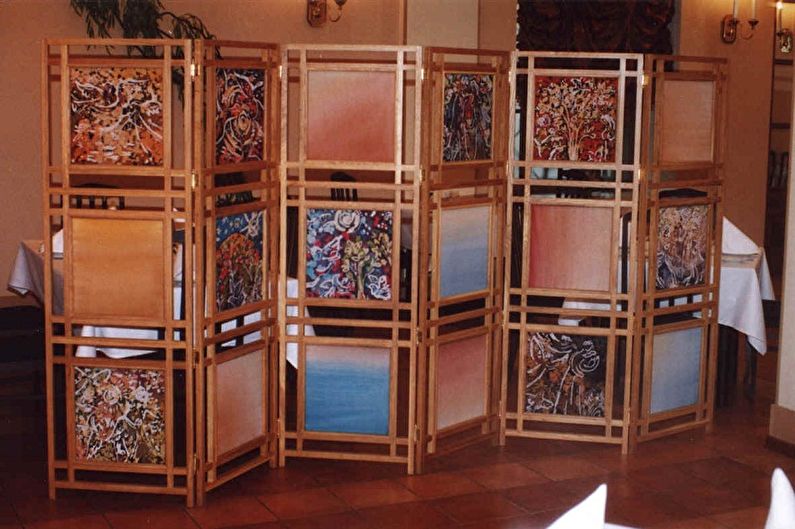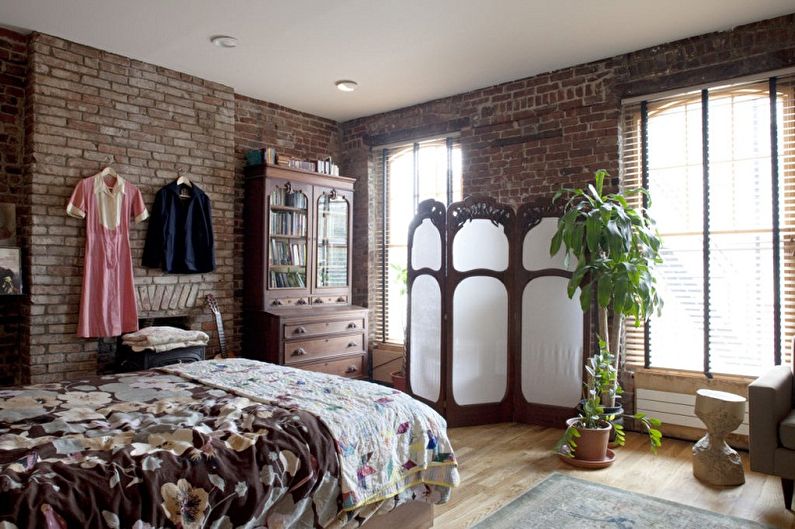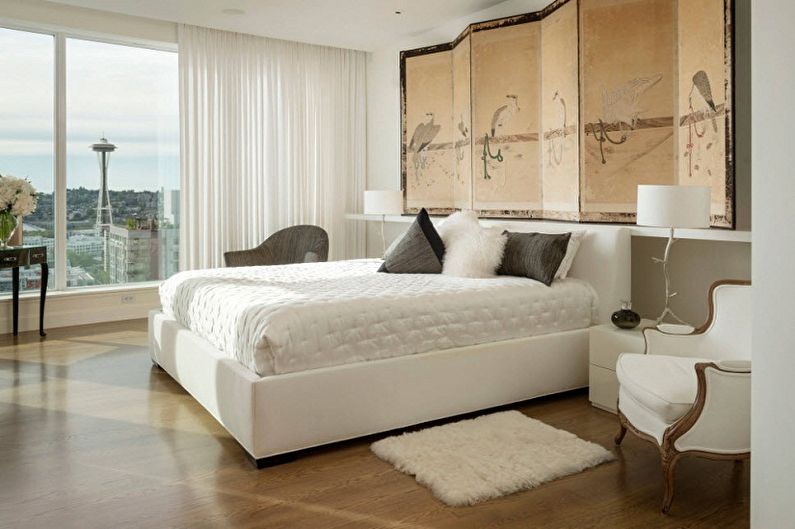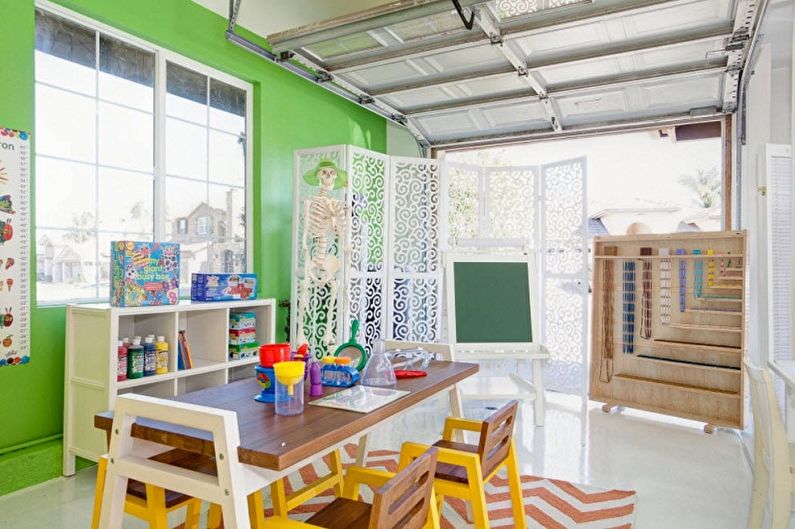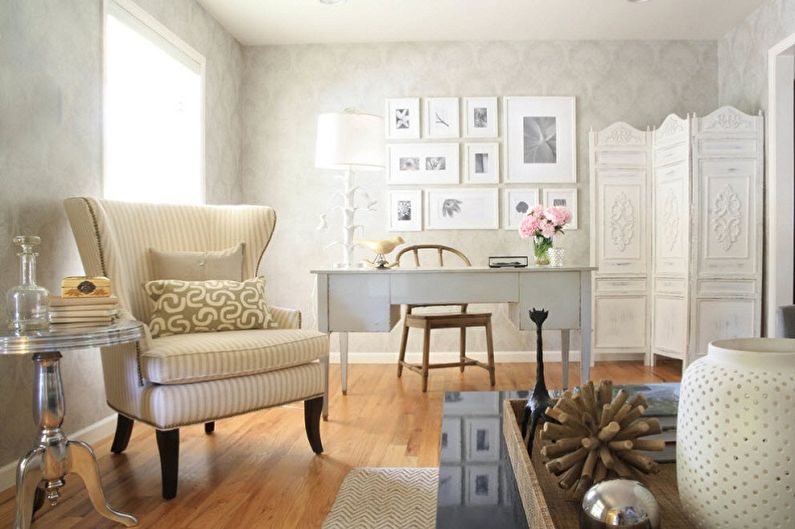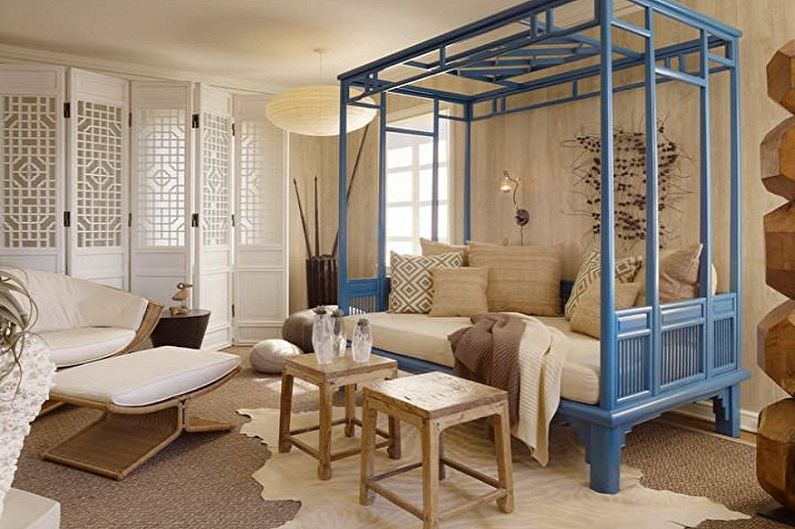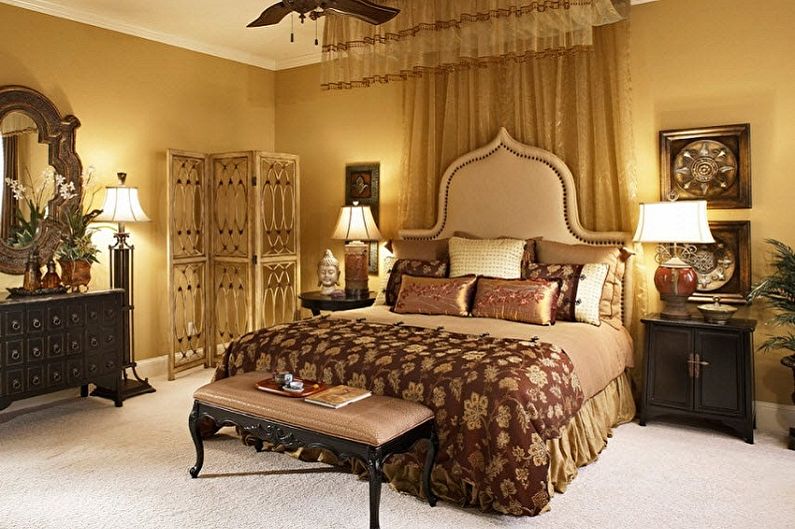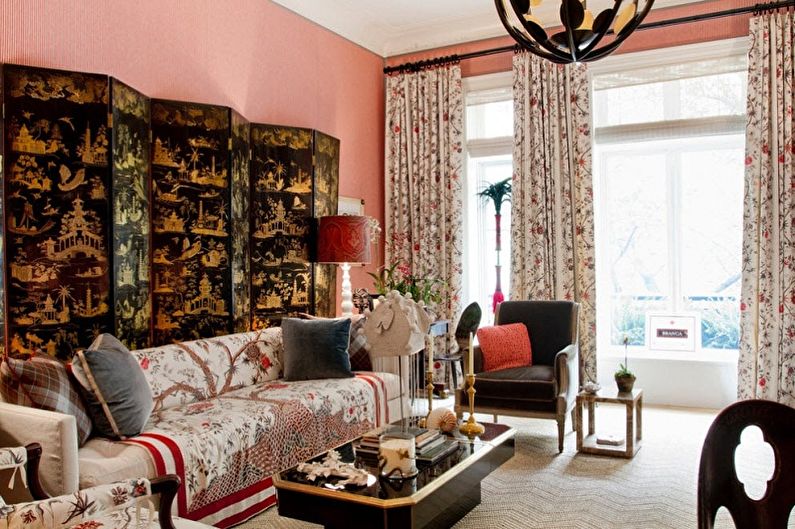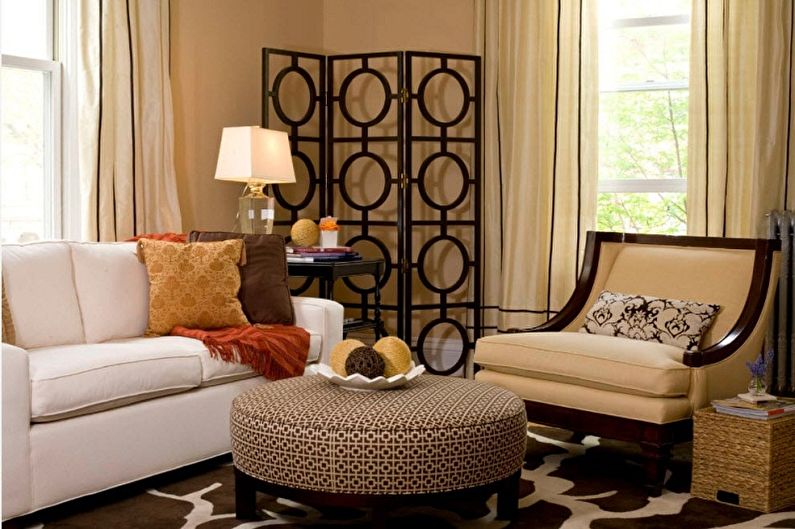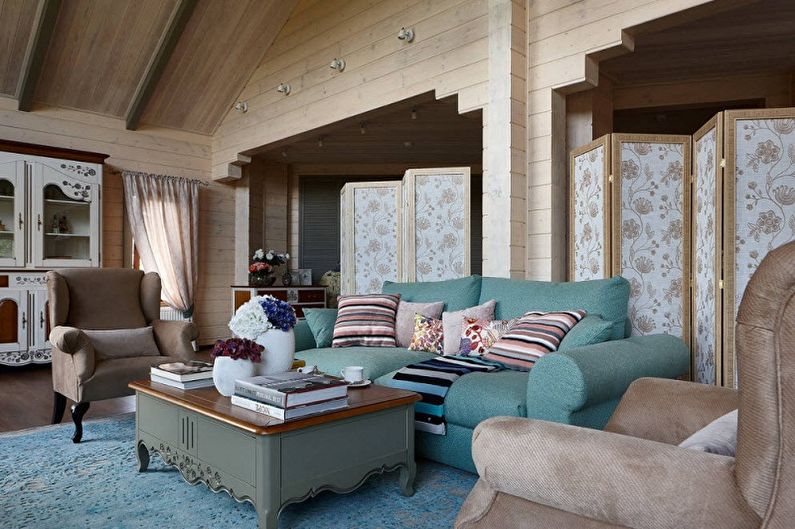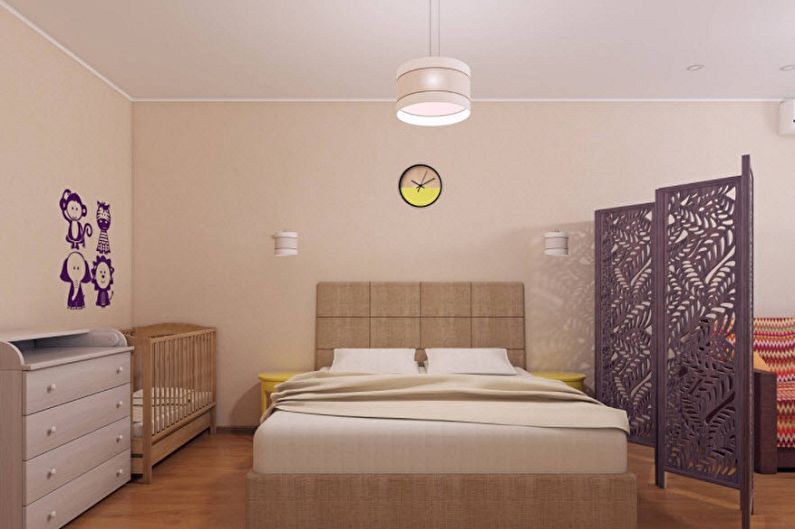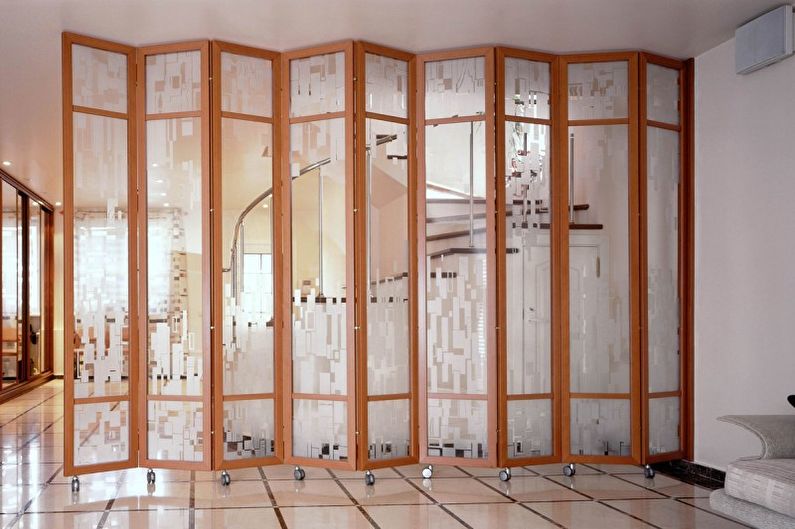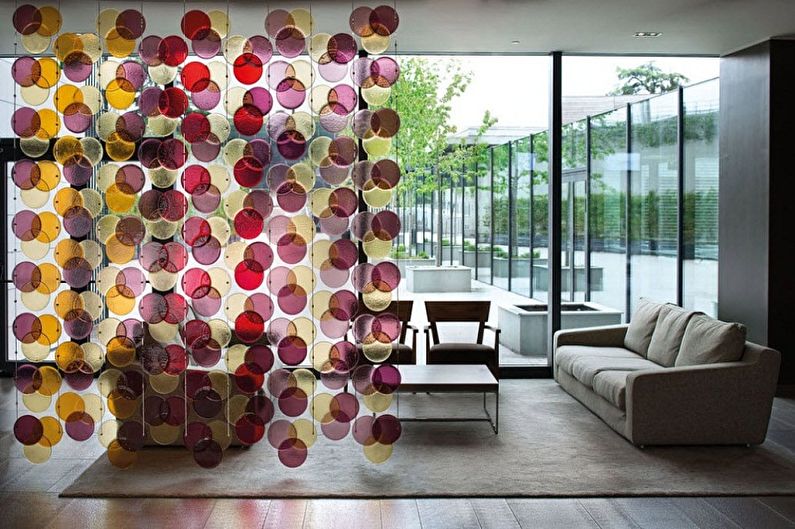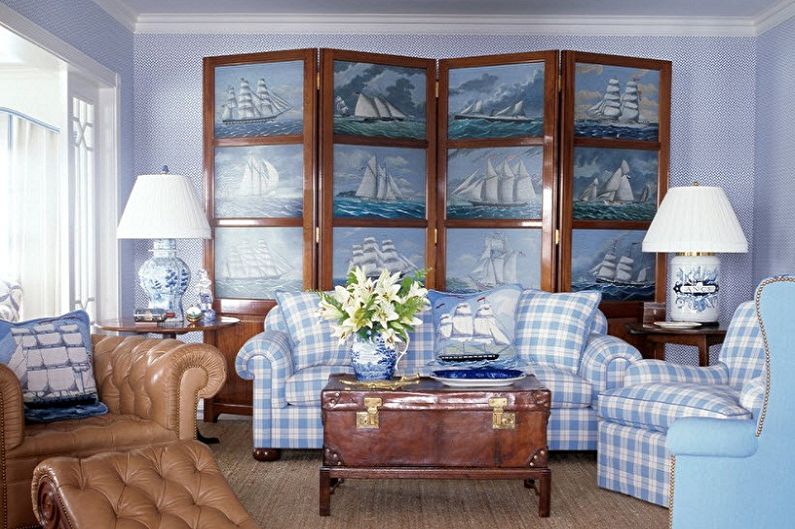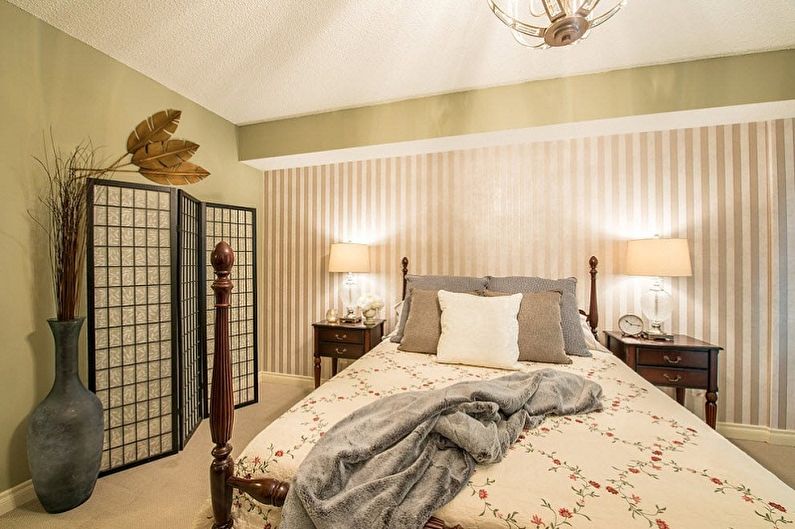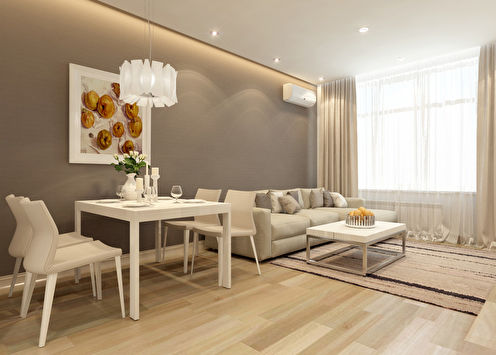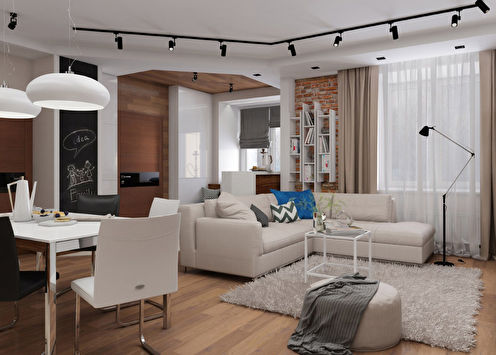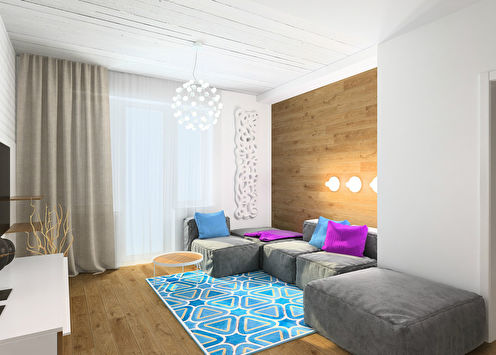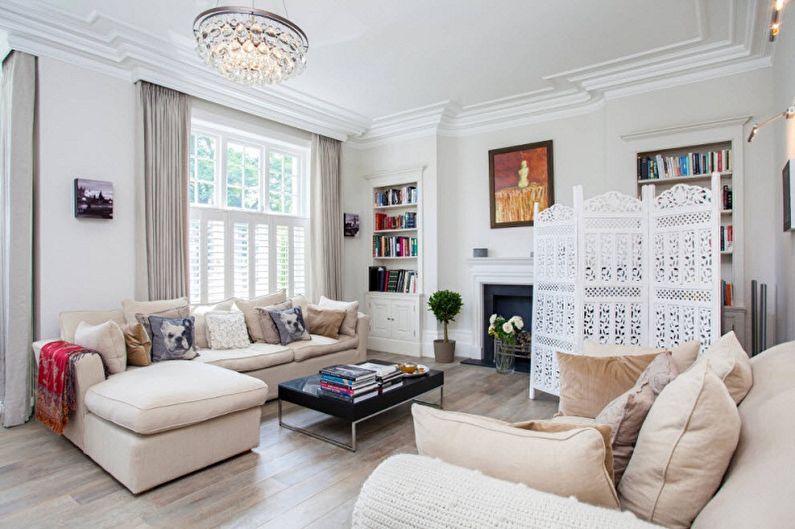
A screen for a room is an excellent element of decor that serves as a multifunctional piece of furniture. It has excellent aesthetic qualities, due to which it serves as a real decoration of the interior, emphasizing the style and elegance of design. In this article we will consider what modern screens are for a room, their methods of application in different rooms, and style differences.
Features of the screen in the interior
Structurally, the screen is one or more partitions interconnected by movable mechanisms. Each of them consists of a frame and a dense or translucent filler. This comfortable element of the decor came to modern interiors from China, where it was made from fabric, and firmly established itself, changing its shapes and materials. In eastern countries, screens were used to scare away evil spirits, so they were installed most often at the entrance to the house. Current trends are prone to practicality, so today screens play a big role in zoning space. The following advantages of installing a screen can be distinguished:
- Easy to install - unlike false walls or plasterboard partitions, the screen can be easily positioned in the right place and, if necessary, moved;
- By moving the screen, you can change the location of the functional areas without construction and repair intervention;
- When folded, the screen takes up little space, it is easy to hide it in the pantry or closet;
- An opportunity to carry out zoning of space with the minimum expenses;
- A large lineup - depending on personal preferences, you can choose a suitable screen design, as well as a design that will suit one or another style of interior.
Screens also have their drawbacks. They can only partially fence off the space at the visual level, without providing sound insulation.
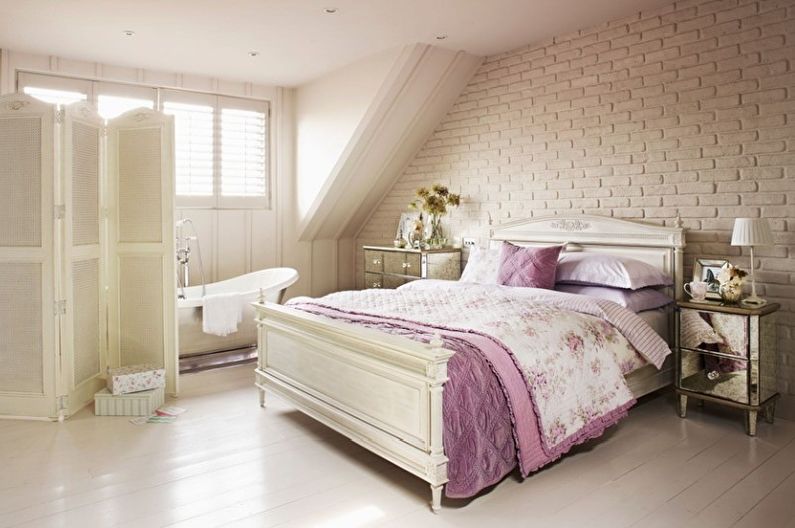
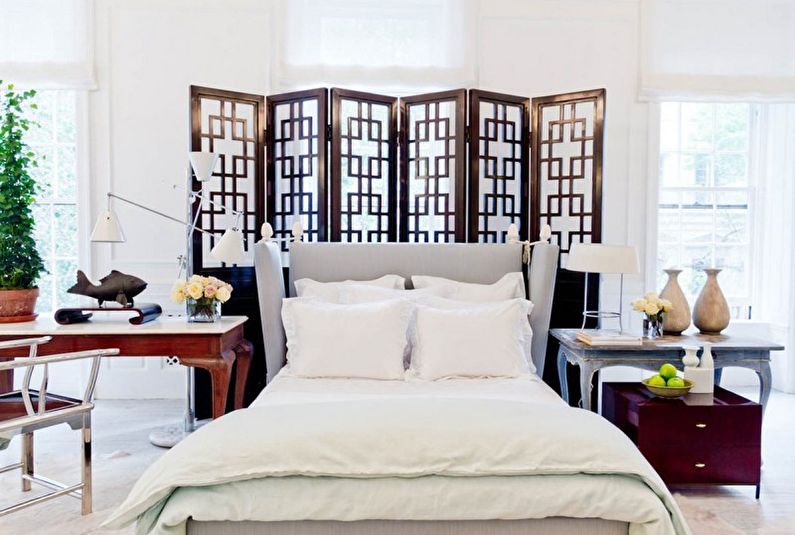
How to use a screen in different rooms
The compactness of the screens allows them to be installed in rooms of all sizes and functional accessories, from the bathroom to the spacious living room. Barriers are especially relevant in modern interiors, where interior partitions are practically absent, and preference is given to open bright space.
Screen in the living room
To place the living room requires the most scrupulous approach. This room requires full compliance of furnishings with the interior design, its color scheme, style. As a rule, it serves to visually separate the cooking zone in studio apartments, sleeping areas (in one-room apartments), an office or a loggia.
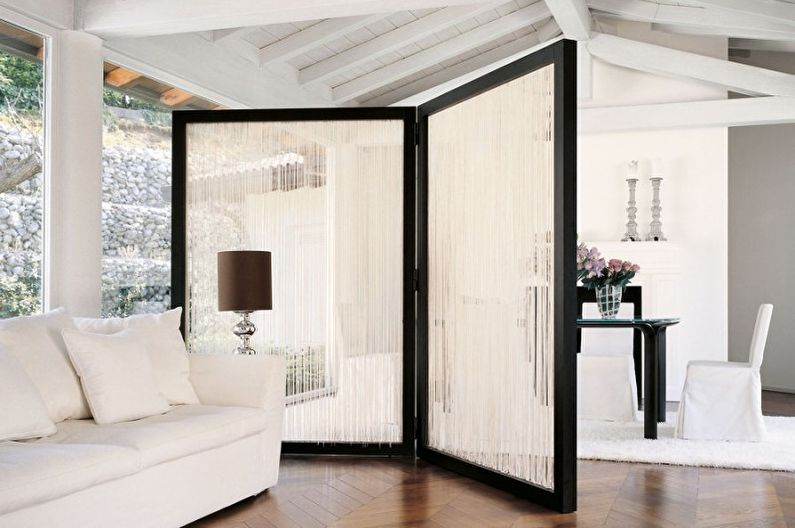
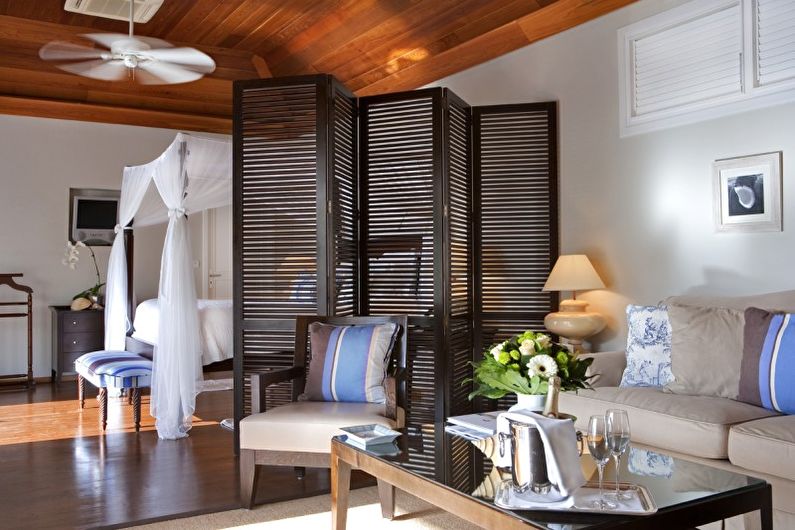
Screen in the bedroom
In the room of an adult bedroom, the screen can play the role of a partition separating the bed from the place for changing clothes, and also serve as a worthy decoration of the interior. In any case, it is better to purchase a design that will allow you to hang clothes, for example, a screen with hooks, hangers. It is very good if at least one leaf is with a mirror. Sometimes a beautiful screen is installed behind the headboard, as a decorative element.
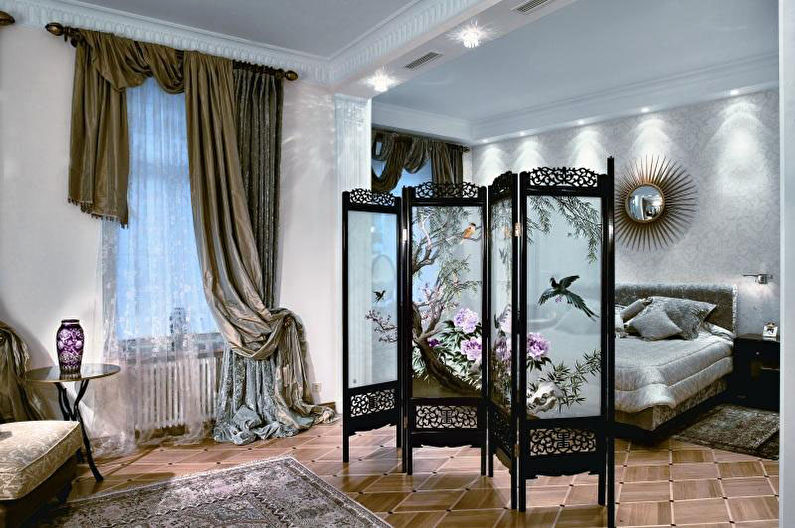

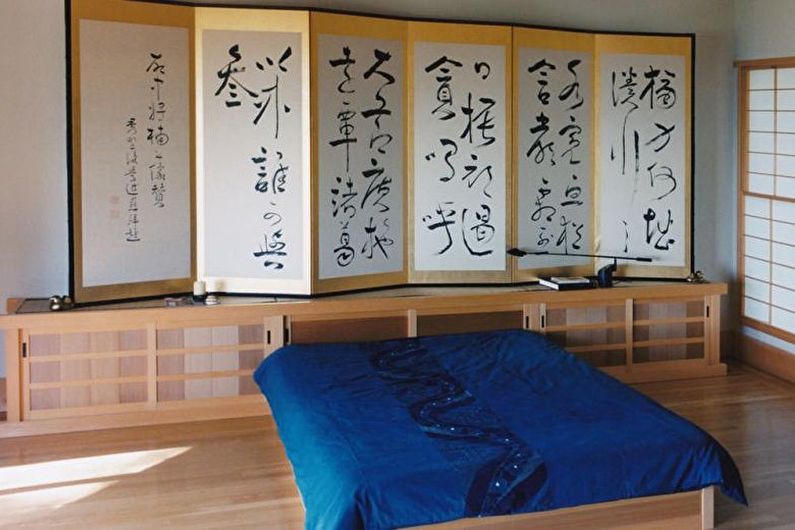
Screen in the nursery
In the children's room, screens are installed to distinguish the play area from the bedroom, although it is possible that the young fashionista will like to feel like a real lady, dressing for a beautiful design.
Also, the screen will become a real salvation if two children live in the room (especially if they are heterosexual). In the nursery with a newborn child, you can install a barrier near the changing table - this arrangement will protect the child from possible drafts.It is better to choose a model with different pockets where various care products will fit.
The design of the screen is selected according to age - the smallest ones will surely like the bright designs with cartoon characters, and adolescents can choose a more stylish model with shelves and other functional elements.
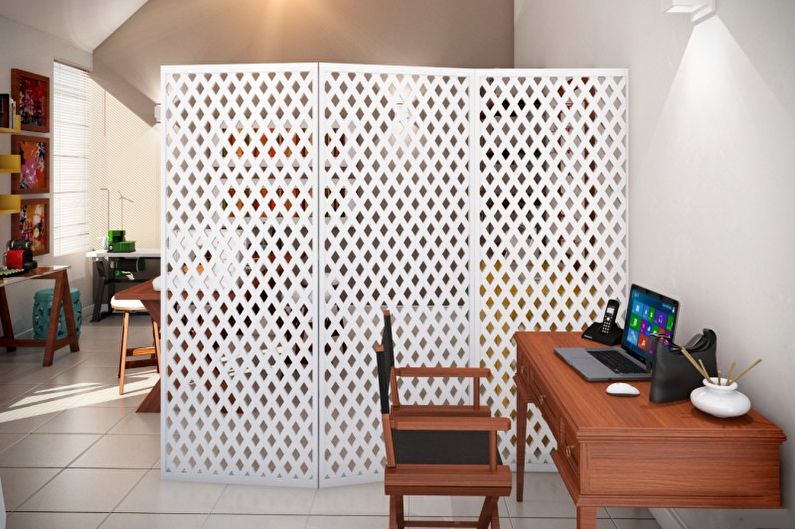
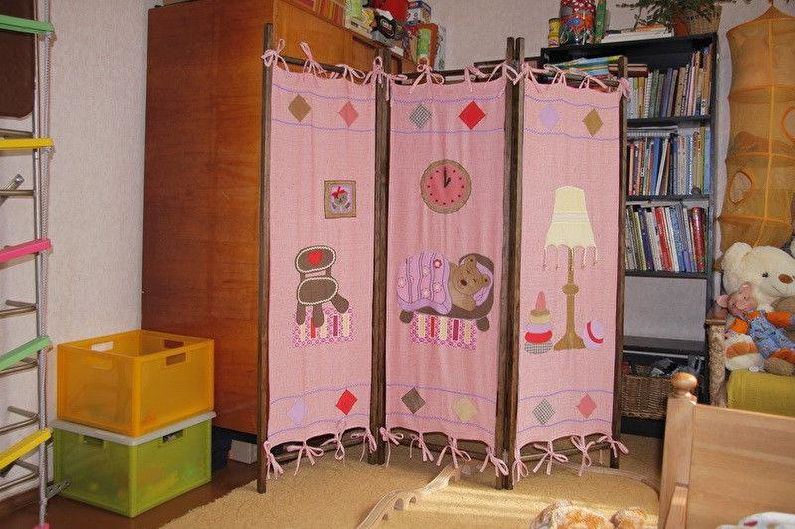
Screen in the kitchen
For the kitchen, it is better to choose a screen made of moisture-resistant material, for example, plastic, glass. The screen looks beautifully matched to the color of the walls or furniture set. A screen is installed in order to draw a line between the cooking and dining areas. This method of zoning is used in large rooms, as well as in the combined kitchen-living rooms.
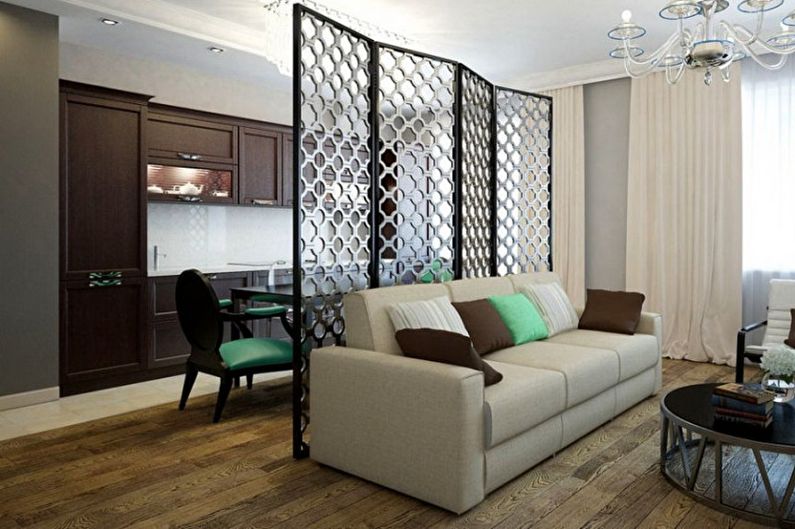
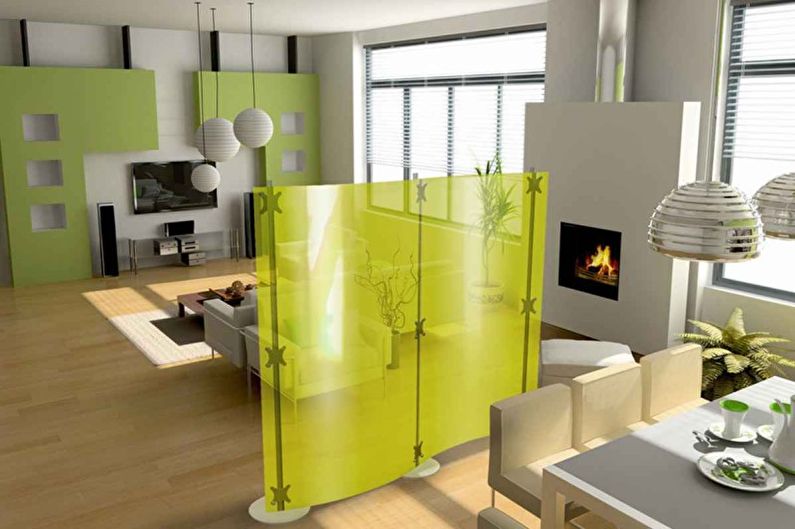
Screen in the bathroom
As for the rooms of bathrooms, full-fledged screens can often be found in private houses, where the rooms are large and the protective structures are simply necessary, especially if the bathroom bowl is not located against the wall, but, for example, in the center. In small interiors, you can find small glass single-leaf screens that separate the area for the adoption of water procedures. Its main purpose is to protect against moisture on the floor surface.
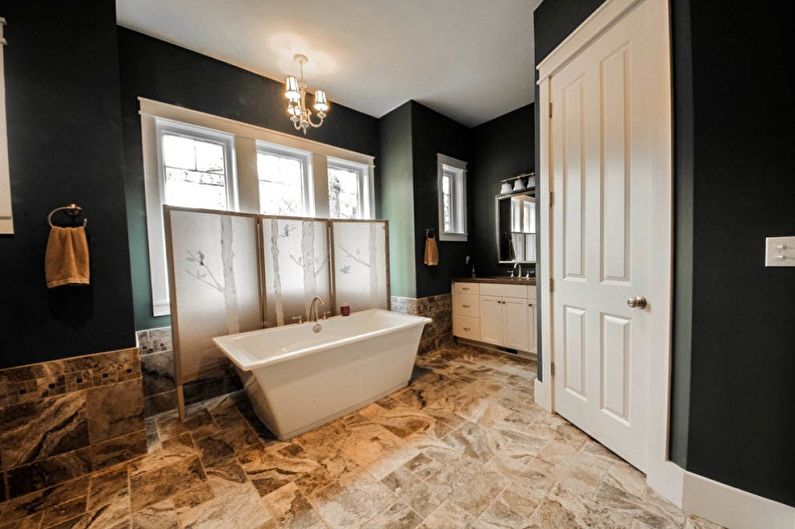
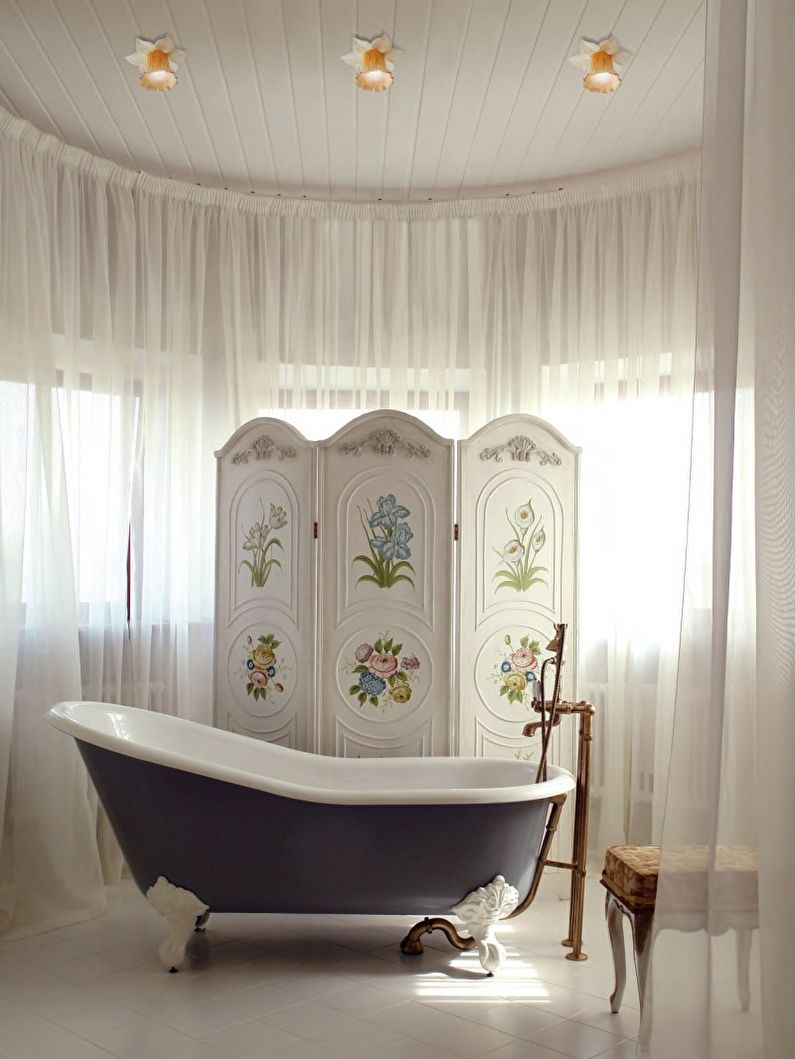
Types and Models
When choosing a screen, it is necessary to pay special attention to its design, since, as we have already said, the lineup of screens is quite large. Consider in detail the most popular types.
Single wing screens
Single-leaf screens cannot fold, but they perfectly mimic small walls, enclosing functional areas. They can often be found in spacious offices as job delimiters or cafes. Designs are located on supports, castors or are stationary products.

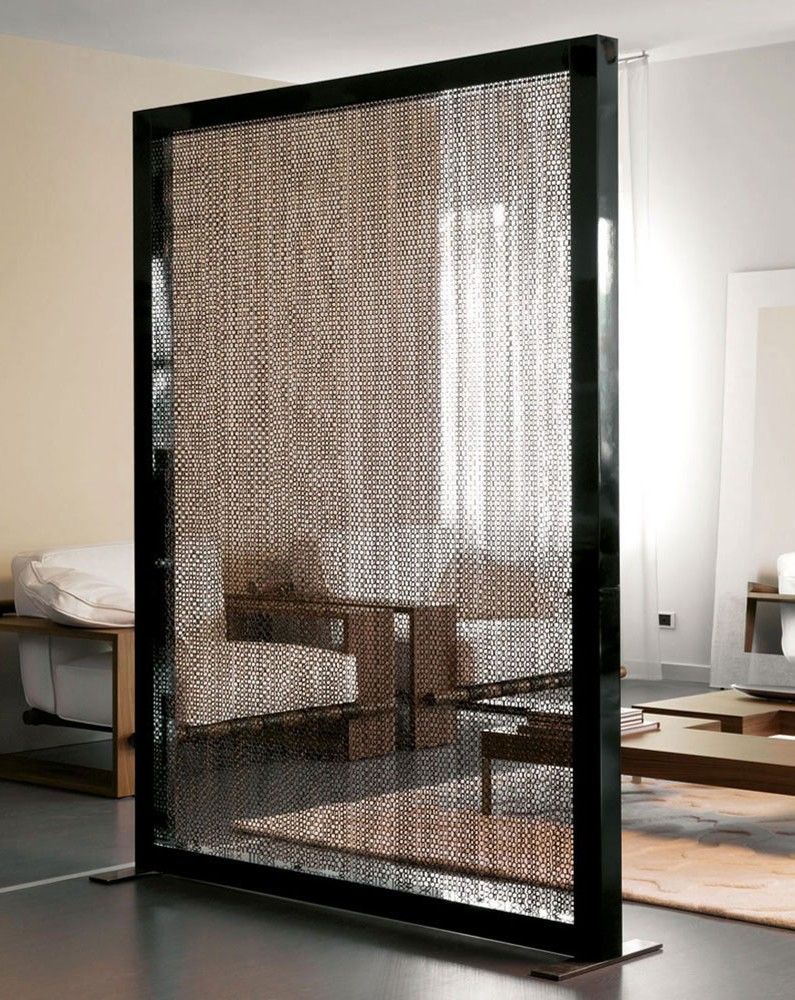
Multi-leaf screens
Screens with several wings can be found much more often. They are also called accordions, as they consist of several canvases connected by hinges. Standard models have from two to four frames, but if the room has a fairly large size, you can make a longer construction on request.
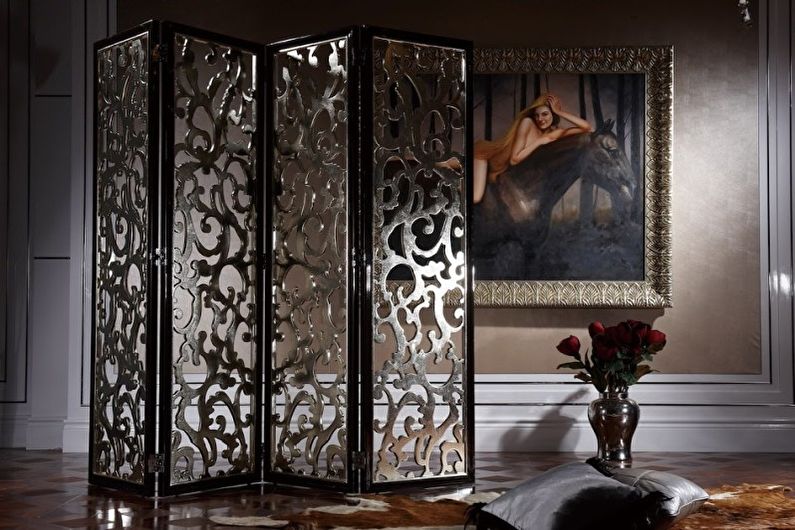

Flexible screens
Flexible screens are especially original. They consist of many narrow plates that are assembled into a single canvas with flexible material. This production technology gives the screen special advantages: the ability to take bizarre forms, emphasizing the sophistication of the interior, and ease of assembly - the canvas simply folds into a roll.

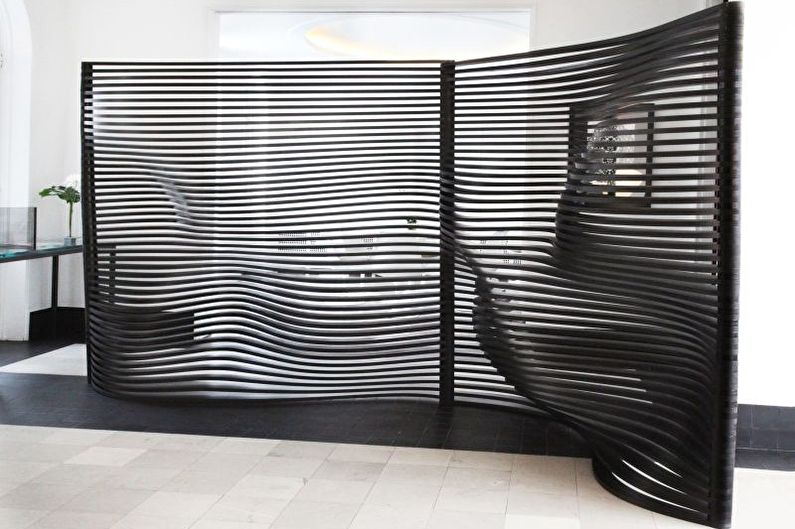
Hanging cloth panels
Such models are canvases, often made of fabric, which are attached to the ceiling surface. They perfectly cope with zoning of space and are used both in bedrooms, giving coziness to a place for relaxation, and in living rooms.
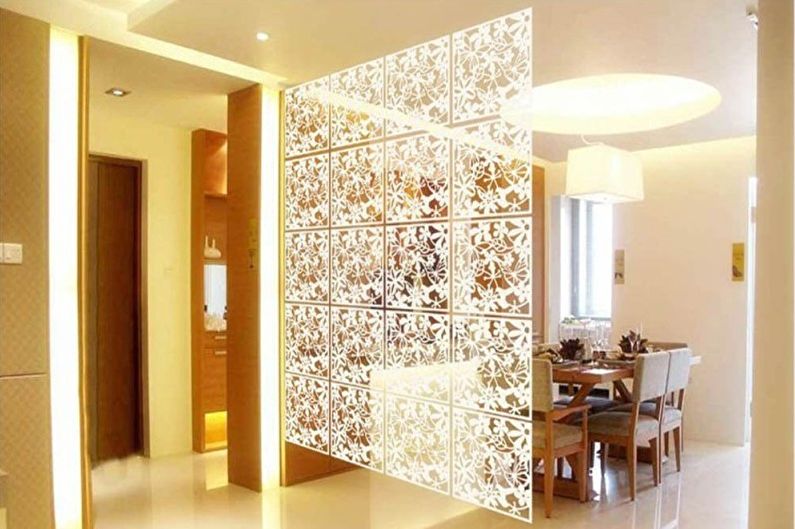
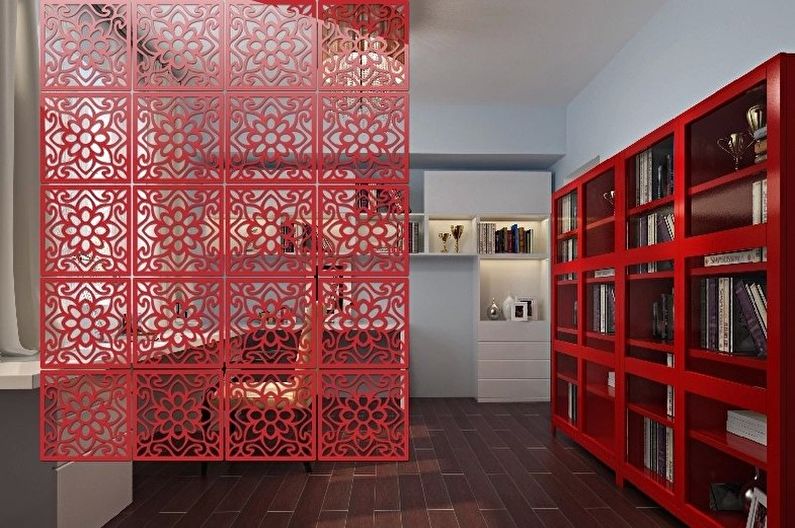
Multifunctional screens
Today's fashion for practical, functional interiors is reflected in the design of screens for the room. In particular, you can find models endowed with hooks for clothes, pockets for various trifles, shelves. Choosing such a screen, special attention should be paid to the degree of its stability.
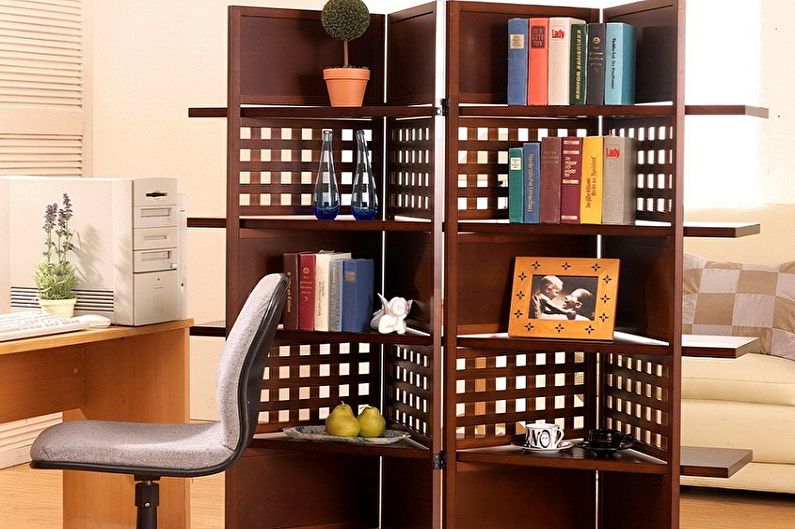
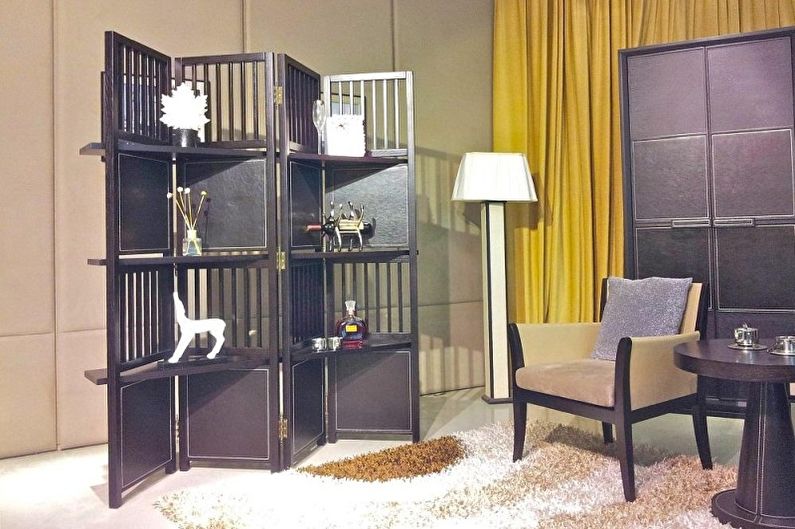
Materials for the manufacture
Today, one can find on sale room screens made of various materials, such as wood, metal, plastic, glass, etc. When choosing, it is important to take into account the specifics of the room, its microclimatic conditions, as well as style and color. Designs can be made entirely of one material or include combinations, for example, a metal frame with a glass insert, a plastic base with a fabric, etc. Thanks to such duets, you can choose the product that is most suitable for quality and price. In the production of a screen for a room, materials such as:
Wood - was originally used for the manufacture of screens. The material is environmentally friendly, high aesthetic indicators, malleable in processing, which allows you to endow designs with various figured refinements.The tree does not tolerate moisture and requires additional processing. Wicker rattan items look especially beautiful;
Metal - acts as a frame base, which contains inserts from other materials (wood, glass panels, etc.). A metal screen can also consist of openwork steel weaves, but only as a stationary option, since it is heavy enough to move;
Glass and mirror - have a special grace, giving the room a sense of spaciousness and light. Glass structures are made of heavy-duty glass. They can be translucent, have a decorative pattern, stained-glass windows and are suitable for the conditions of any premises;
Textiles and leather - materials create a special cosiness in the interior. They can be monophonic or color, complemented by various images. They are light in weight, and it’s easy to wash them, so they are often installed in nurseries;
Plastic is the most budget option. It is not as durable as wood or metal, but it is unpretentious to the effects of external factors: it easily tolerates moisture, temperature changes, etc. It requires accuracy in operation.
There are also such interesting options as screens with wrought-iron sashes, which act as decoration, but do not protect the space from prying eyes, as well as made of rice paper (in the Japanese style) or in the form of a photo gallery.
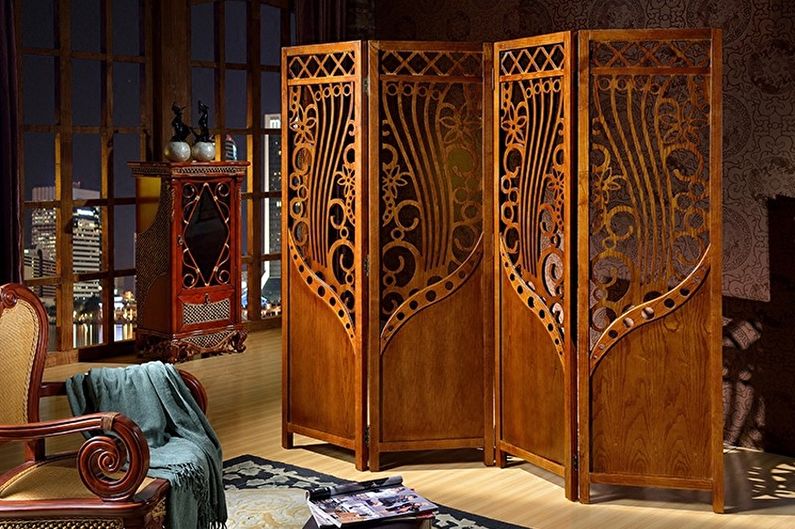
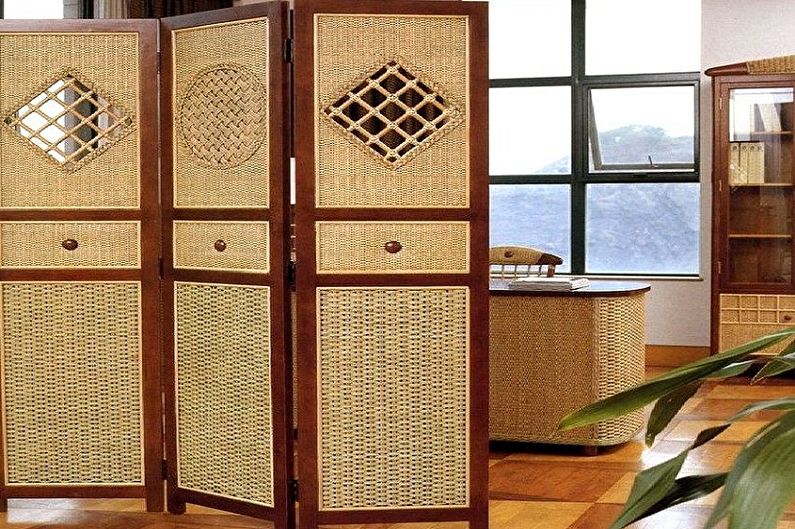
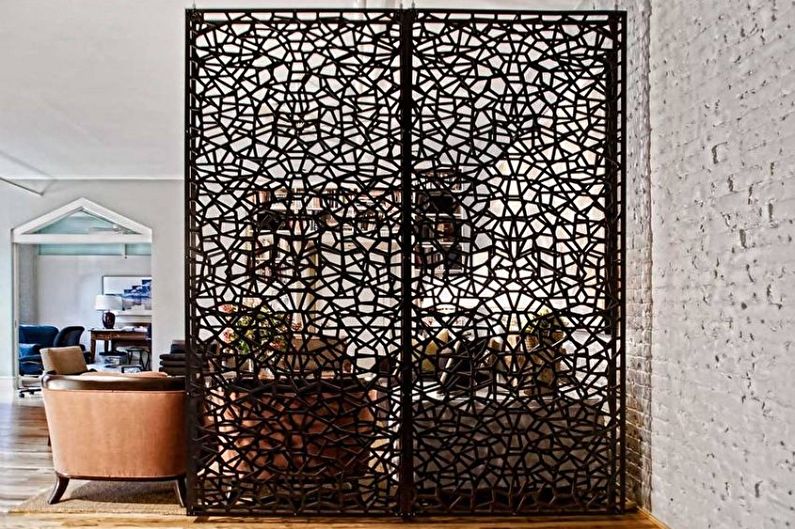
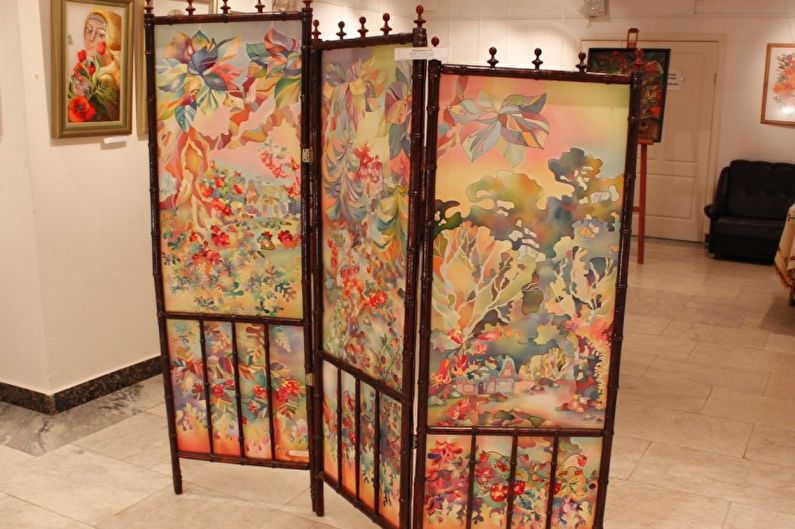
Screen in different interior styles
Since the screen is a rather significant interior item, it should correspond to the general concept of style, harmoniously fit into the situation, even being its accent “spot”.
The classical style is characterized by traditional forms and expensive materials, so the screen can be made of wood, elegant forged structures. Carved elements, picturesque ornaments are also welcome. Particularly rich look products with leather inserts, gilding, emphasizing the sophistication of the interior.
Japanese-style screens are made from natural materials, most often from fabrics or stylized rice paper. In ancient times, painting on screens in Japan was considered a real work of art, which is reflected in our days. Of course, you will no longer find handmade work on sale, but modern technologies allow you to apply no less sophisticated images, for example, a blossoming sakura branch, hieroglyphs, etc.
Modern minimalism is prone to open space, the absence of inter-wall partitions, therefore, here the screen plays a special role as an object that performs zoning. The design of the screen does not imply bright decoration - it can be made of glass, a mirror, have clear shapes, but at the same time look no less elegant, making the room cozy and comfortable.
The combination of French sophistication and rustic simplicity is inherent in Provencal interiors. Here screens from natural wood of light, even slightly faded tones with aging elements (scuffs, cracks) will look good. Textile products with fine floral motifs typical of the Provence style are also welcome.
The exact opposite is the loft style interior. Here, industrial objects of the interior are maximally put on display: exposed brick, concrete walls, open communications, industrial lamps, so it’s worth choosing a more massive screen made of metal and wood with a rough finish. Since the decor is often performed by abstract paintings, black-and-white photos and posters, the partition can well support such an idea, containing on its canvases images of ancient European streets, road signs, inscriptions.
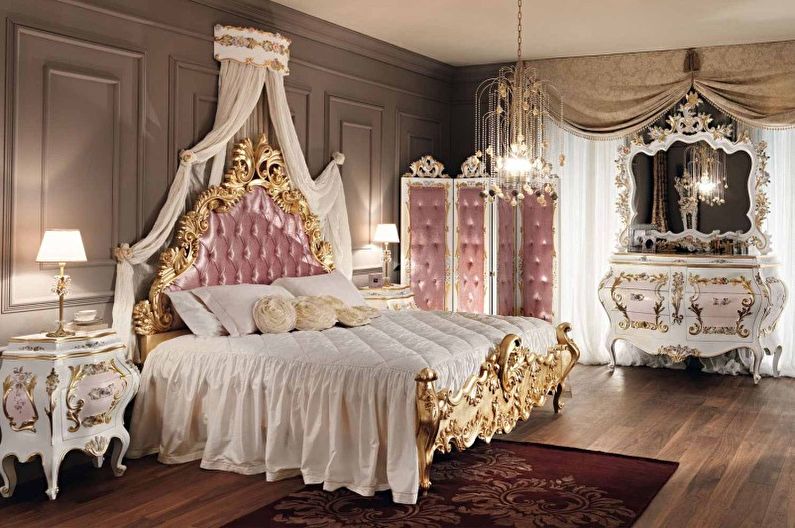
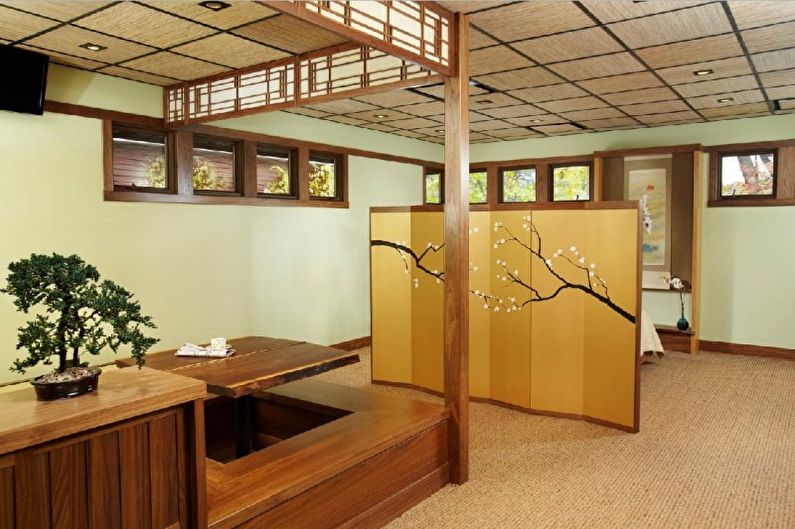

Screen for a room - photo
We offer you to familiarize yourself with the vast world of Her Majesty the screens in our gallery. Here are collected photos of various models of this excellent piece of furniture.Being undeservedly forgotten a few decades ago, the modern screen has gained many new configurations, as you can see with real examples. Enjoy watching!
